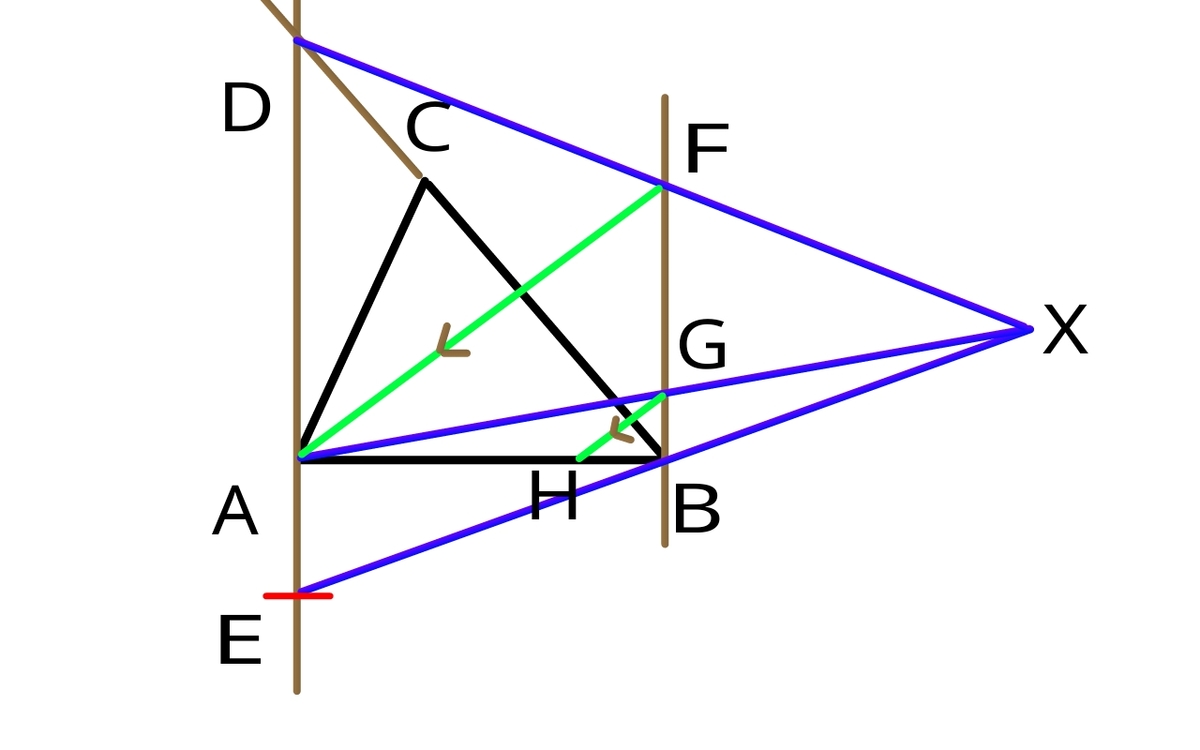Construction Is A Piece Of Cake, Right?

Anshuman took an arbitrary triangle and started doing aimless constructions, the steps of which are given below:
( ) Through points and , he drew two lines perpendicular to segment . He extended where it intersected with the perpendicular at and chose an arbitrary point on perpendicular drawn from .
( ) Then he cuts an arc equal to on taking centre , he names that point .
( ) Then he joins and and extend them up to the point of intersection .
( ) Then he joined with and name their intersection with as .
( ) Then he joined and drew a parallel to it from which intersects at .
He wonders: "What possibly be equal to?"
Disclaimer : Image not drawn up to scale.
This section requires Javascript.
You are seeing this because something didn't load right. We suggest you, (a) try
refreshing the page, (b) enabling javascript if it is disabled on your browser and,
finally, (c)
loading the
non-javascript version of this page
. We're sorry about the hassle.
This problem is a result of real life experience, my friend Anshuman and I were actually trying to find our own way of constructing altitude of triangle.
The problem is based on practical application of Basic Proportionality Theorem (BPT),
In the above figure it can be clearly seen that C B C A = B D A B by similarity of triangles.
In the problem also we try to achieve the same by construction,
First we extend the sides to form a right triangle D A B , in the next step we take the length of D B on D A (extended) and mark the point as E .
Now,
D A D B = D A D E
As F B is parallel to D E ,
By BPT the ratio continues,
D A D E = G B F G
Again as F A is parallel to G H ,
G B F G = H B A H
Hence we make D A D B = H B A H .
That makes A H equal to the altitude drawn from A on B C .